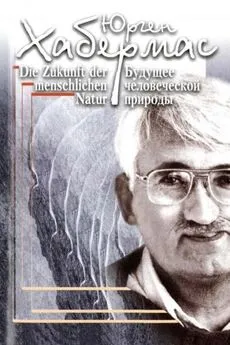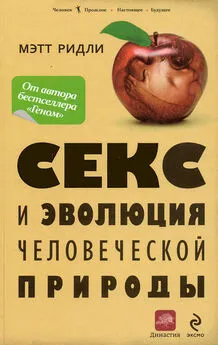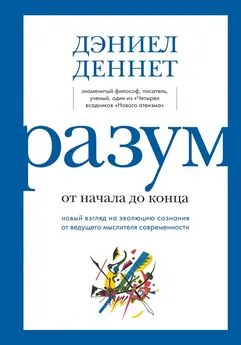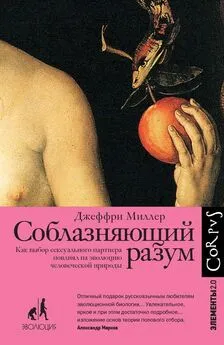Джеффри Миллер - Соблазняющий разум [Как выбор сексуального партнера повлиял на эволюцию человеческой природы] [litres]
- Название:Соблазняющий разум [Как выбор сексуального партнера повлиял на эволюцию человеческой природы] [litres]
- Автор:
- Жанр:
- Издательство:Литагент Corpus
- Год:2020
- Город:Москва
- ISBN:978-5-17-982778-8
- Рейтинг:
- Избранное:Добавить в избранное
-
Отзывы:
-
Ваша оценка:
Джеффри Миллер - Соблазняющий разум [Как выбор сексуального партнера повлиял на эволюцию человеческой природы] [litres] краткое содержание
Соблазняющий разум [Как выбор сексуального партнера повлиял на эволюцию человеческой природы] [litres] - читать онлайн бесплатно ознакомительный отрывок
Интервал:
Закладка:
Nitecki M. (ed.). Evolutionary innovations. Chicago: University of Chicago Press, 1990.
Noe R., Hammerstein P. Biological markets. Trends in Ecology and Evolution. 1995; 10: 336–339.
O’Donald P. Genetic models of sexual selection. Cambridge University Press, 1980.
Paglia C. Sexual personae: Art and decadence from Nefertiti to Emily Dickinson. New Haven, CT: Yale University Press, 1990.
Pakkenberg B., Gundersen J. G. Neocortical neuron number in humans: Effect of sex and age. Journal of Comparative Neurology. 1997; 384: 312–320.
Parish A. R. Sex and food control in the “uncommon chimpanzee”: How bonobo females overcome a phylogenetic legacy of male dominance . Ethology and Sociobiology. 1993; 15(3): 157–179.
Parker S. T. A sexual selection model for hominid evolution . Human Evolution. 1987; 2: 235–253.
Paul L., Hirsch L. R. Human male mating strategies: II. Moral codes of “quality” and “quantity” strategists. Ethology and Sociobiology. 1996; 17: 71–86.
Pawlowski B. Loss of oestrus and concealed ovulation in human evolution: The case against the sexual selection hypothesis . Current Anthropology. 1999; 40: 257–275.
Perrett D. I. et al. Sexual dimorphism and facial attractiveness . Nature. 1998; 394: 884–886.
Perusse D. Cultural and reproductive success in industrial societies: Testing the relationship at the proximate and ultimate levels . Behavioral and Brain Sciences. 1992; 16: 267–322.
Peterson D., Goodall J. Vision of Caliban: On chimpanzees and people . Boston: Houghton Mifflin, 1993.
Petrie M. Improved growth and survival of offspring of peacocks with more elaborate trains . Nature. 1994; 371: 598–599.
Petrie M., Halliday T., Sanders C. Peahens prefer peacocks with elaborate trains. Animal Behavior. 1991; 41: 323–331.
Petrinovich L. Human evolution, reproduction, and morality. Cambridge, MA: MIT Press, 1998.
Pfeiffer J. The creative explosion. New York: Harper & Row, 1982.
Pinker S. The language instinct . London: Allen Lane, 1994.
Pinker S. How the mind works . New York: Norton, 1997.
Pitts M., Roberts M. Fairweather Eden: Life in Britain half a million years ago as revealed by the excavations at Boxgrove . London: Century, 1997.
Plomin R., DeFries J., McClearn G., Rutter M. Behavioral genetics (3rd ed.). San Francisco: W. H. Freeman, 1997.
Plotkin H. Evolution in mind: An introduction to evolutionary psychology. Cambridge, MA: Harvard University Press, 1998.
Pollux P. M. J., Wester A., de Haan E. H. F. Random generation deficit in alcoholic Korsakoff patients. Neuropsychologica. 1995; 33(1): 125–129.
Pomiankowski A., Moller A. A resolution of the lek paradox . Proceedings of the Royal Society (London) B. 1995; 260: 21–29.
Pomiankowski A., Iwasa Y., Nee S. The evolution of costly mate preferences. I. Fisher and biased mutation. Evolution. 1991; 45(6): 1422–1430.
Popper K. Objective knowledge: An evolutionary approach . Oxford University Press, 1972.
Posner R. Sex and reason . Cambridge, MA: Harvard University Press, 1992.
Poundstone W. Prisoner’s dilemma: John von Neumann, game theory, and the puzzle of the bomb. New York: Doubleday, 1992.
Power C. “Beauty” magic: The origins of art // R. Dunbar et al. (eds.). The evolution of culture. Edinburgh University Press, 1999.
Rapoport A., Budescu D. Generation of random series in two-person strictly competitive games. Journal of Experimental Psychology: General. 1992; 121: 352–363.
Rapoport A., Erev I., Abraham E. V., Olson D. E. Randomization and adaptive learning in a simplified poker game. Organizational Behavior and Human Decision Processes. 1997; 69: 31–49.
Rawls J. A theory of justice . Cambridge, MA: Harvard University Press, 1971.
Rawson P. The art of tantra . London: Thames & Hudson, 1978.
Real L. Search theory and mate choice. II. Mutual interaction, assortative mating, and equilibrium variation in male and female fitness . American Naturalist. 1991; 138: 901–917.
Rentschler I., Herzberger B., Epstein D. (eds.). Beauty and the brain: Biological aspects of aesthetics. Berlin: Birkhauser, 1988.
Reynolds J. D., Gross M. R. Costs and benefits of female choice: Is there a lek paradox? American Naturalist. 1990; 136: 230–243.
Rice W. R. Heritable variation in fitness as a prerequisite for adaptive female choice: The effect of mutation-selection balance . Evolution. 1988; 42: 817–820.
Richards I. A. Basic English and its uses . London: Kegan Paul, 1943.
Richards R. J. Darwin and the emergence of evolutionary theory of mind and behavior . University of Chicago Press, 1987.
Ridley Mark (ed.). Evolution . Oxford University Press, 1997.
Ridley Matt. The red queen: Sex and the evolution of human nature . New York: Viking, 1993.
Ridley Matt. The origins of virtue . London: Viking, 1996.
Roeder K. D., Treat A. E. The detection and evasion of bats by moths. American Scientist. 1961; 49: 135–148.
Rogers A. R., Mukherjee A. Quantitative genetics of sexual dimorphism in human body size . Evolution. 1992; 46: 226–234.
Rogers C. R. On becoming a person: A therapist’s view of psychotherapy . New York: Houghton Mifflin, 1995.
Rose M. R., Lauder G. V. (eds.). Adaptation . London: Academic Press, 1996.
Rostand E. Cyrano de Bergerac (Trans. A. Burgess). London: Nick Hern Books, 1993. (First published 1898 in French.)
Roth A. E., Sotomayor M. Two-sided matching . Cambridge University Press, 1990.
Rowe D. C. The limits of family influence: Genes, experience, and behavior . New York: Guilford Press, 1994.
Rowe L., Houle D. The lek paradox and the capture of genetic variance by condition-dependent traits . Proceedings of the Royal Society (London) B. 1996; 263: 1415–1421.
Rowe N. The pictorial guide to the living primates . East Hampton, NY: Pogonias Press, 1996.
Runciman W. G. The social animal . London: HarperCollins, 1998.
Ryan M. J. The Tungara frog: A study in sexual selection . Chicago University Press, 1985.
Ryan M. J. Sexual selection, sensory systems, and sensory exploitation . Oxford Surveys of Evolutionary Biology. 1990; 7: 156–195.
Ryan M. J. Sexual selection and mate choice // J. R. Krebs & N. B. Davies (eds.). Behavioral ecology: An evolutionary approach (4th ed.). Oxford: Blackwell Scientific, 1997.
Ryan M. J., Keddy-Hector A. Directional patterns of female mate choice and the role of sensory biases . American Naturalist. 1992; 139: S4–S35.
Samuelson L. Evolutionary games and equilibrium selection . Cambridge, MA: MIT Press, 1997.
Sandars N. K. Prehistoric art in Europe . London: Penguin, 1985.
Savage-Rumbaugh S., Lewin R. Kanzi: The ape at the brink of the human mind . New York: Wiley, 1994.
Sawaguchi T. Possible involvement of sexual selection in neocortical evolution of monkeys and apes. Folia primatologica. 1997; 68: 95–99.
Scheib J. Sperm donor selection and the psychology of female choice . Ethology and Sociobiology. 1994; 15(3): 113–129.
Schmitt B., Simonson A. Marketing aesthetics . New York: Free Press, 1997.
Searle J. The problem of consciousness // G. R. Bock & J. Marsh (eds.). Experimental and theoretical studies of consciousness. New York: John Wiley, 1992.
Searle J. The mystery of consciousness . London: Granta Press, 1997.
Shackelford T. K., Larsen R. J. Facial attractiveness and physical health . Evolution and Human Behavior. 1999; 20: 71–76.
Sheets-Johnstone M. Hominid bipedality and sexual selection theory . Evolutionary Theory. 1990; 9(1): 57–70.
Shepard R. N. Evolution of a mesh between principles of the mind and regularities of the world // J. Dupre (ed.). The latest on the best. Cambridge, MA: MIT Press, 1987.
Shepard R. N. The genetic basis of human scientific knowledge // G. R. Bock & G. Cardew (eds.). Characterizing human psychological adaptations. New York: John Wiley, 1997.
Sherman P. W. The clitoris debate and the levels of analysis . Animal Behavior. 1989; 37(4): 697–698.
Shipman P. Taking wing: Archaeopteryx and the evolution of bird flight . New York: Simon & Schuster, 1998.
Short R. V., Balaban E. (eds.). The differences between the sexes . Cambridge University Press, 1994.
Shostak M. Nisa: The life and words of a!Kung woman . Cambridge University Press, 1981.
Sigmund K. Games of life . Oxford University Press, 1993.
Silver L. M. Remaking Eden: How genetic engineering and cloning will transform the American family . New York: Avon, 1998.
Simon H. Models of men: Social and rational. New York: Wiley, 1957.
Simonton D. K. Age and outstanding achievement: What do we know after a century of research? Psychological Bulletin. 1988; 104: 251–267.
Simonton D. K. Genius and chance: A Darwinian perspective // J. Brockman (ed.). Creativity. New York: Simon & Schuster, 1993.
Simpson J. A., Kenrick D. T. (eds.). Evolutionary social psychology . Mahwah, NJ: Erlbaum, 1997.
Singer P. (ed.). Ethics . Oxford University Press, 1994.
Singh D. Waist-to-hip ratio (WHR): A defining morphological feature of health and female attractiveness . Journal of Personality and Social Psychology. 1993; 65: 293–307.
Singh D. Female health, attractiveness, and desirability for relationships: Role of breast asymmetry and waist-to-hip ratio . Ethology and Sociobiology. 1995; 16: 465–481.
Singh D., Bronstad P. M. Sex differences in the anatomical locations of human body scarification and tattooing as a function of pathogen prevalence . Evolution and Human Behavior. 1997; 18: 403–416.
Skinner B. F. Science and human behavior . New York: Macmillan, 1953.
Skinner B. F. Beyond freedom and dignity . London: Penguin, 1988.
Skyrms B. Evolution of the social contract . Cambridge University Press, 1996.
Sloman S., Sloman L. Mate selection in the service of human evolution . Journal of Social and Biological Structures. 1988; 11: 457–468.
Small M. Female choices: Sexual behavior of female primates . Ithaca, NY: Cornell University Press, 1993.
Smith E. A., Bird R. L. B. Turtle hunting and tombstone opening: Public generosity as costly signalling . Evolution and Human Behavior. 2000.
Smith S. M., Ward T. B., Finke R. A. (eds.). The creative cognition approach . Cambridge, MA: MIT Press, 1995.
Smuts B. B. Sex and friendship in baboons . New York: Aldine de Gruyter, 1985.
Smuts B. B. The evolutionary origins of patriarchy . Human Nature. 1985; 6: 1–32.
Sober E., Wilson D. S. Unto others: The evolution and psychology of unselfish behavior . Cambridge, MA: Harvard University Press, 1998.
Sommers C. H. Who stole feminism? How women have betrayed women . New York: Simon & Schuster, 1994.
Spatt J., Goldenberg G. Components of random generation by normal subjects and patients with dysexecutive syndrome . Brain and Cognition. 1993; 23: 231–242.
Читать дальшеИнтервал:
Закладка:
![Обложка книги Джеффри Миллер - Соблазняющий разум [Как выбор сексуального партнера повлиял на эволюцию человеческой природы] [litres]](/books/1070954/dzheffri-miller-soblaznyayuchij-razum-kak-vybor-seksu.webp)









